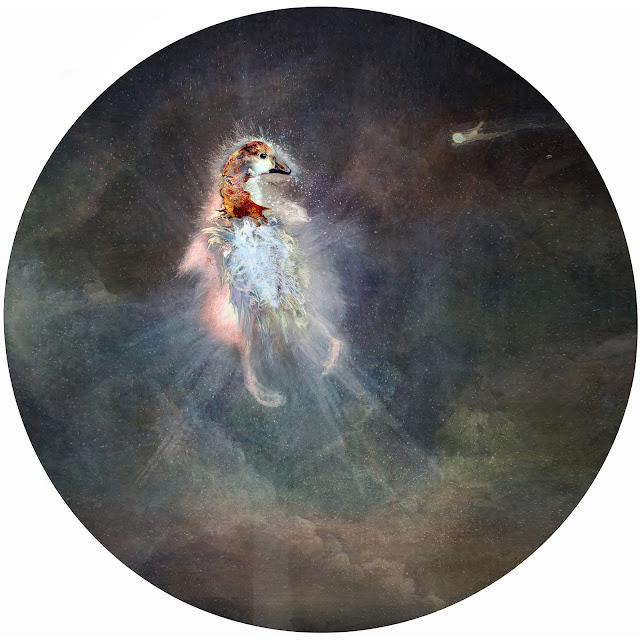NOX - a record of
things passing by night
Judith Nangala Crispin, Stephen Harrison and Victoria Royds
Grainger Gallery | Until 13 February 2022
Wamboin resident Judith Nangala Crispin describes herself as “a Canberra-based poet and visual artist, with a background in music.” What an understatement! She has been highly successful in each field, has been an Honorary Creative Arts Fellow at the National Library, and currently is Artist in Residence at Musica Viva.
She is also a photographer who has developed her own alternative process, Lumachrome Glass Printing, with which she now makes extraordinarily beautiful and artistic images of roadkill - “a threnody for fallen rabbits, birds, spiders and other beings with whom we share this planet”. A threnody is a lyric poem of mourning.
The image titles reveal something of Crispin’s
poetry talents. For example, She remembered running, baby in pouch, the
burrow nearly visible, birds lifting from the water tank at the first rifle’s
crack– so cold in the long grass, day drops night, and the joey stills. In the
winter sky over Braidwood, Enid finds her baby again, 2021. A loving
description of a wombat mother and her frozen joey, respectful burying them.
Wondering
what Crispin’s works have to do with photography when no camera was involved? Photography
can be defined as the art or process of producing images by the action of
radiant energy and especially light on a sensitive surface. No requirement to
use a camera.
Crispin’s earliest Lumachrome glass prints in 2018 were made simply as expanded sunprints, on black and white fibre paper, coated with her own emulsions, and left to expose under glass for between 12 and 36 hours. Her practice has evolved to use complex layers of glass and chemistry to control the colours and textures. She says the works are the result of genuine collaboration with the landscape, literally constructed from light, earth and flesh. She loves that the technique makes dead animals and birds seem alive again. It is light alone that manifests these colours and shapes; not paint or anything that can be completely controlled.
For
finer detail, Crispin uses chemigram variants, painting compounds like selenium
or copper chloride directly onto feathers, scales or fur. Her process is adapted
for each work. She might paint an animal’s blood into the image during
exposure. Ochres, seeds, sticks and other materials are sourced where the
animal or bird was found. If maggots and flies appear, their tracks are
incorporated into the work. These 2020 prints clearly show her process has
developed splendidly.
 |
Juliette, who had once been a gosling, explodes in stars over Braidwood, on her way to becoming a sun, 2021 © Judith Nangala Crispin |
Her
work draws on ideas and stories gathered over many years, while tracing her
family's Bpangerang-Gunaikurnai ancestry. It is wonderfully accompanied in this
exhibition by sculptural pieces from two other local artists – Stephen Harrison (Murrumbateman artist - sculptures,
paintings, drawings) and Victoria Royds (Braidwood visual artist/sculptor -
and a Holistic Carbon Farmer.)
Speaking at the opening, Crispin referred to Royds as the Queen of regenerative farming, and to a project she is working on with Harrison as a regenerative road bearing witness to the animals and other wildlife that were killed on the path between Canberra and the coast during the 2019/20 fires. This exhibition, in many ways, is the first step along the road. Crispin suggests everything beautiful in the world is so because it is transitory, and the exhibition allows us to witness the miracle of things before they are gone. By chance but nevertheless appropriately, this exhibition opened in the same week as other events in Canberra celebrated caring for country.
 |
Out out, brief candle, 2021_Bronze, concrete, ceramic, wooden box - Stephen Harrison (IMAGE SUPPLIED) |
 |
Where Three Dreams Cross_Bronze - Victoria Royds (IMAGE SUPPLIED) |
There
is insufficient space here to describe the sculptural pieces adequately. But I
must say that they are quality works by two skilled artists, well worth looking
at and thinking about. So please visit this exhibition.

